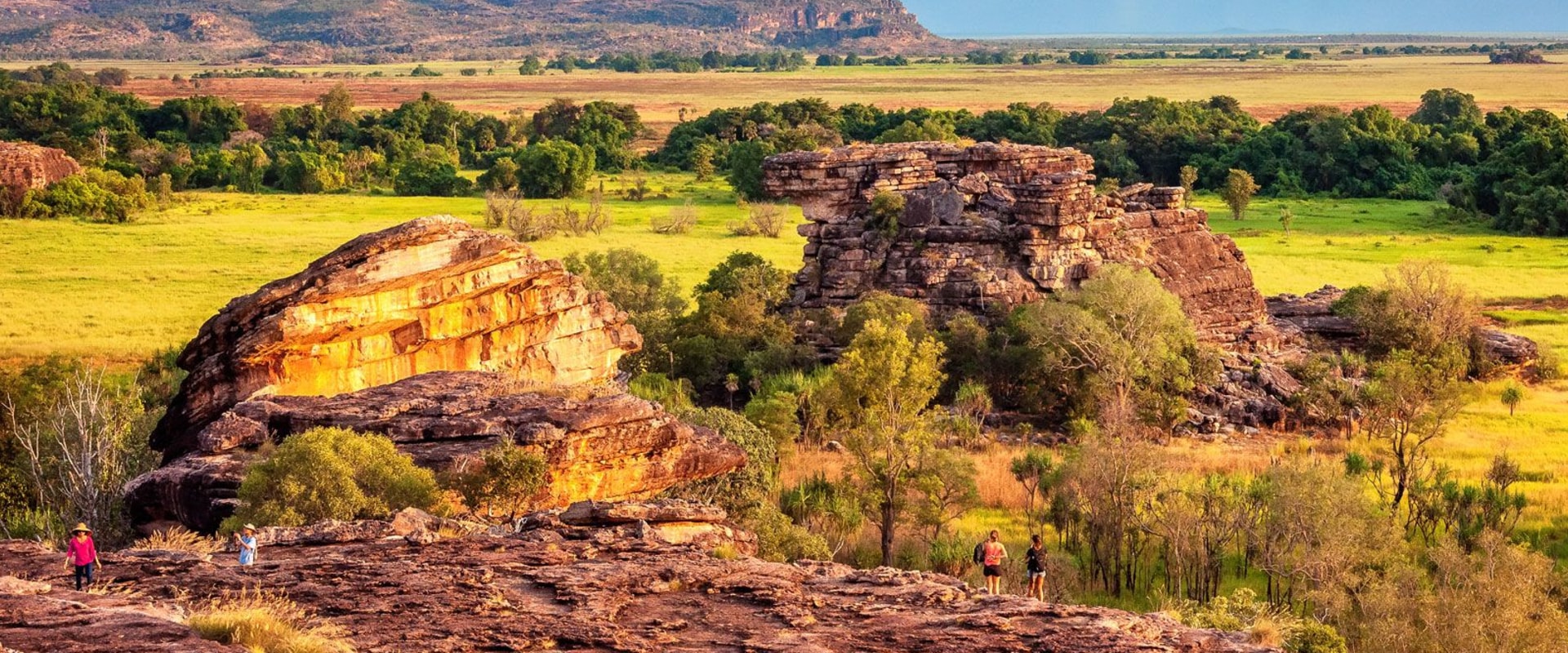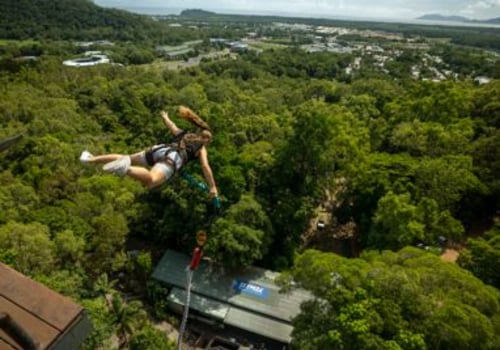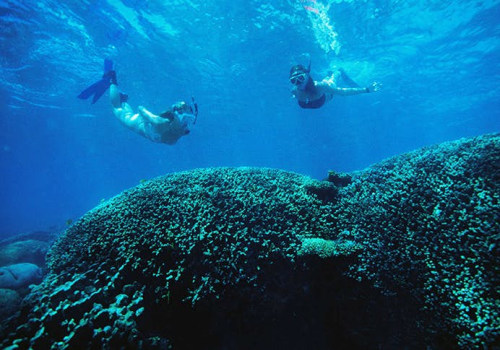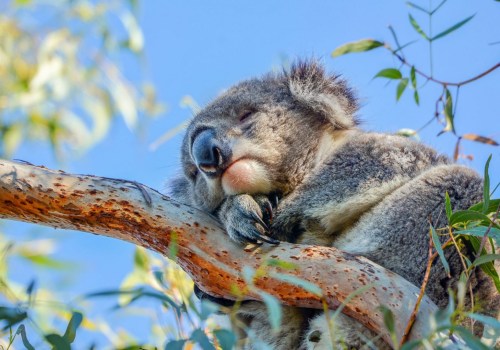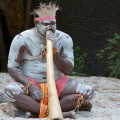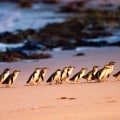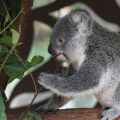Welcome to the breathtaking Kakadu National Park, a true gem of Australia's natural wonders. This vast expanse of wilderness is a sanctuary for a diverse range of flora and fauna, making it a must-visit destination for nature enthusiasts. In this article, we will take you on a journey through the wonders of Kakadu, from its stunning landscapes to its unique wildlife. So, join us as we explore this incredible national park and discover why it should be at the top of your list when visiting Australia. Kakadu National Park is a true gem of Australia, located in the Northern Territory and covering an impressive area of over 19,000 square kilometers.
This UNESCO World Heritage Site has been a significant cultural and natural landmark for the indigenous Bininj/Mungguy people for over 65,000 years. With such a rich history and breathtaking landscapes, it's no surprise that Kakadu National Park is a must-visit destination for travelers. The park is home to a diverse range of ecosystems, including ancient rock formations, lush rainforests, and vast wetlands. These landscapes have been shaped by thousands of years of erosion, resulting in stunning scenery that is unlike anywhere else in the world.
Visitors can explore the park's many walking trails, taking in the unique flora and fauna along the way. Speaking of flora and fauna, Kakadu National Park is home to over 2,000 plant species, making it a botanist's paradise. From towering eucalyptus trees to delicate wildflowers, there is something to marvel at around every corner. The park is also home to 280 bird species, making it a birdwatcher's dream come true.
Keep an eye out for the colorful rainbow lorikeets and majestic sea eagles as you explore the park. But it's not just birds that call Kakadu National Park home. The park is also home to 75 different types of reptiles, including saltwater crocodiles and giant monitor lizards. These fascinating creatures can be spotted basking in the sun or hiding among the foliage, so keep your eyes peeled during your visit.
With so much to explore and discover, it's no wonder that Kakadu National Park attracts visitors from all over the world. From breathtaking landscapes to unique flora and fauna, this park truly has it all. So why not join us on a journey through this spectacular destination and experience all that Kakadu National Park has to offer?
Experience the Beauty of Nature at Kakadu National Park
From cascading waterfalls to rugged landscapes, Kakadu National Park is a nature lover's paradise. The park is divided into different regions, each with its unique features and wildlife.Here are some of the must-visit spots in Kakadu National Park:
The South Alligator Region
The South Alligator Region in Kakadu National Park is a must-visit destination for wildlife enthusiasts. This region is known for its extensive wetlands, including the Mamukala Wetlands and the Yellow Water Billabong. With its lush greenery and diverse ecosystem, the South Alligator Region is a haven for birdlife. Visitors have the opportunity to spot a variety of bird species, including herons, egrets, and jabirus. But that's not all - the South Alligator Region also offers visitors the chance to see crocodiles in their natural habitat. These prehistoric creatures can be spotted basking in the sun or gliding through the water, giving visitors an up-close and personal encounter with these majestic animals.The Twin Falls Region
The Twin Falls Region in Kakadu National Park is a must-visit for any nature lover.Located in the remote northern part of the park, this region offers visitors a chance to experience the stunning Twin Falls, which are surrounded by towering cliffs and lush greenery. To reach the falls, visitors must first take a 4WD track and then a boat ride through the picturesque landscape. Aside from its natural beauty, the Twin Falls Region also holds significant cultural importance for the local indigenous people. The area is rich in ancient rock art and is considered a sacred site by the traditional owners of the land. Visitors are encouraged to respect and appreciate the cultural significance of this region. For those looking for an immersive and unique experience in Kakadu National Park, the Twin Falls Region is not to be missed.
With its stunning natural wonders and cultural significance, it truly embodies the diversity and wonder of this incredible destination.
The Koolpin Gorge Region
The Koolpin Gorge Region, located in Kakadu National Park, is a hidden gem waiting to be explored. This remote area is only accessible by 4WD and requires a permit to enter, but the journey is well worth it for those seeking a true adventure. As you make your way through the rugged terrain, you will be rewarded with breathtaking views of untouched landscapes and crystal clear swimming holes. The peacefulness and tranquility of this region make it the perfect escape from the bustling tourist areas of the park.One of the most unique features of the Koolpin Gorge Region is its abundance of wildlife. Keep your eyes peeled for a variety of animals, including wallabies, kangaroos, and an array of bird species. It's also a prime spot for crocodile sightings, so be sure to stay alert and follow all safety precautions. For those looking to immerse themselves in nature and truly disconnect from the outside world, the Koolpin Gorge Region is the perfect destination.
So pack your 4WD and don't forget your permit, because this is one experience you won't want to miss.
The East Alligator Region
The East Alligator Region is a must-visit destination within Kakadu National Park. Located in the northeastern part of the park, this region offers a unique and unforgettable experience for visitors. One of the highlights of this region is the iconic Ubirr Rock, which is famous for its ancient rock art. This sacred site holds great cultural significance for the traditional owners of the land, the Bininj/Mungguy people.The rock art at Ubirr is estimated to be over 20,000 years old, making it one of the oldest and most well-preserved examples of Aboriginal rock art in Australia. In addition to its cultural significance, Ubirr Rock also offers stunning views of the Arnhem Land escarpment. From the top, visitors can take in panoramic views of the surrounding landscape and witness the changing colors of the sky during sunrise and sunset. Aside from Ubirr Rock, the East Alligator Region is also a popular spot for bird watching. With over 280 species of birds found in Kakadu National Park, this region is home to a diverse range of avian species. Visitors can spot majestic birds such as eagles, kites, and kingfishers as they explore the park.
The Burdulba Region
The Burdulba Region is a must-visit for any traveler exploring Kakadu National Park.Located in the southern part of the park, this region offers stunning landscapes and incredible opportunities for outdoor activities. One of the main attractions in the Burdulba Region is Gunlom Falls. This breathtaking waterfall offers visitors the perfect spot for swimming and picnicking. The crystal clear water and picturesque surroundings make it a popular spot for both locals and tourists alike. In addition to its natural beauty, Gunlom Falls also offers panoramic views of the southern part of Kakadu National Park. From the top of the falls, you can see the vast expanse of the park and its diverse terrain, including lush forests, rugged cliffs, and winding rivers. For those seeking a more adventurous experience, there are also hiking trails in the Burdulba Region that lead to hidden waterfalls and stunning lookout points.
These trails provide a unique opportunity to immerse yourself in the untouched wilderness of Kakadu National Park. No matter what your interests may be, the Burdulba Region is sure to captivate and amaze you with its natural wonders. So be sure to add it to your list when planning your trip to Kakadu National Park.
The Nourlangie Region
The Nourlangie Region is a must-visit for anyone exploring Kakadu National Park. This region is home to some of the most impressive rock formations in the park, including the iconic Nourlangie Rock and Anbangbang Rock Shelter. These ancient geological wonders are a sight to behold and offer visitors a unique opportunity to witness the power and beauty of nature.But the Nourlangie Region is not just about stunning rock formations. It also offers a glimpse into the rich indigenous culture and history of the area. The traditional owners of this land, the Bininj/Mungguy people, have lived here for over 65,000 years and their connection to this land is evident in the many rock art sites scattered throughout the region. Visitors can learn about the traditional stories and cultural significance behind these rock art sites by joining a guided tour or taking a self-guided walk.
The Anbangbang Rock Shelter is particularly special as it features some of the oldest rock art in the park, dating back thousands of years. Exploring the Nourlangie Region is an enriching experience that allows visitors to not only appreciate the natural beauty of the park but also gain a deeper understanding of its cultural significance. Make sure to include this region on your itinerary when visiting Kakadu National Park.
The Bardedjilidji Region
Situated in the northern part of the park, the Bardedjilidji Region offers visitors a chance to experience the remote wilderness of Kakadu. This untouched area is home to an incredible diversity of flora and fauna, making it a must-visit for any nature lover.One of the main highlights of this region is its excellent birdwatching opportunities. With over 280 species of birds recorded in Kakadu National Park, the Bardedjilidji Region is a paradise for bird enthusiasts. Keep your eyes peeled for majestic birds of prey, colorful parrots, and unique waterbirds as you explore this stunning landscape. In addition to birdwatching, the Bardedjilidji Region also offers breathtaking views of the surrounding landscape.
From rugged cliffs and deep gorges to vast floodplains and winding rivers, this region showcases the diverse beauty of Kakadu National Park. If you're looking for a true wilderness experience, be sure to include the Bardedjilidji Region in your itinerary when visiting Kakadu National Park. This remote and untouched area will leave you in awe of its natural wonders and provide a peaceful escape from the busier areas of the park.
The Jim Jim Falls Region
The Jim Jim Falls Region: Nestled within the vast expanse of Kakadu National Park, the Jim Jim Falls region is a must-visit for adventure-seekers. This area is home to the iconic Jim Jim Falls, a breathtaking natural wonder that can be accessed by a challenging hike through the rugged terrain.Challenging Hike and Stunning Views: The hike to Jim Jim Falls is not for the faint of heart. It involves navigating through rocky gorges and boulder fields, but the reward at the end is well worth it. As you approach the falls, you'll be met with stunning views of the towering waterfall, surrounded by lush greenery and rocky cliffs.
Swimming and Camping:
In addition to the exhilarating hike, the Jim Jim Falls region also offers opportunities for swimming and camping.The crystal-clear waters of the plunge pool at the base of the falls are perfect for a refreshing dip after your hike. And for those looking to extend their stay in this beautiful area, there are several campsites available for overnight stays.
A Perfect Day Trip:
With its combination of adventure, natural beauty, and relaxation, the Jim Jim Falls region is an ideal spot for a day trip within Kakadu National Park. So pack your hiking boots, swimsuit, and camping gear, and get ready to experience all that this spectacular region has to offer.The Yurmikmik Region
The Yurmikmik Region is a must-visit area within Kakadu National Park.This rugged and scenic region offers visitors a chance to truly immerse themselves in the natural beauty of the park. With its picturesque waterfalls, stunning landscapes, and diverse flora and fauna, it's no wonder that the Yurmikmik Region is a popular spot for hiking and camping. One of the main draws of this region is its scenic walking trails. These trails allow visitors to get up close and personal with the stunning landscapes and wildlife of the park. Whether you're an experienced hiker or just looking for a leisurely stroll, there's a trail for everyone in the Yurmikmik Region. In addition to its walking trails, the Yurmikmik Region is also home to some of the most breathtaking waterfalls in Kakadu National Park.
The Jim Jim Falls and Twin Falls are two of the most iconic waterfalls in the park and are definitely worth a visit. These cascading waterfalls offer a refreshing escape from the heat and are perfect for a swim or picnic. For those looking to spend more time in this beautiful region, there are several camping options available. From basic campsites to more luxurious options, there's something for every type of traveler. And what better way to experience the wonders of Kakadu National Park than by spending a night under the stars?
The Maguk Region
The Maguk Region is a must-visit destination within Kakadu National Park.Located in the southern part of the park, this region is home to the picturesque Maguk Gorge. One of the main attractions of the Maguk Region is the natural pool located at the base of the gorge. Here, visitors can take a refreshing dip in the crystal-clear waters and cool off from the hot Australian sun. The surrounding scenery is simply breathtaking, with towering cliffs and lush vegetation creating a serene and peaceful atmosphere.
The Maguk Gorge itself is a sight to behold. Formed by thousands of years of erosion, it is a testament to the power and beauty of nature. The gorge is also home to a diverse range of flora and fauna, making it a great spot for wildlife enthusiasts. For those seeking adventure, there are also hiking trails that lead up to the top of the gorge, providing stunning views of the surrounding landscape.
These trails range from easy to moderate difficulty, making them accessible for all ages and fitness levels. As part of our Silo on 'Encountering Australian wildlife' and 'National Parks and Sanctuaries', we highly recommend adding the Maguk Region to your itinerary when visiting Kakadu National Park. It offers a unique and unforgettable experience that showcases the true wonders of this incredible destination.
The Mary River Region
The Mary River Region is a must-visit for anyone exploring Kakadu National Park. This stunning region, located in the southern part of the park, is known for its incredible variety of flora and fauna.Visitors can experience the beauty of this unique landscape by taking a cruise along the Mary River. The Mary River is home to a diverse range of wildlife, including crocodiles, birds, and other fascinating creatures. Taking a cruise along the river is an excellent way to get up close and personal with these incredible animals while also enjoying the serene and picturesque surroundings. As you glide along the river, you'll be able to spot crocodiles basking in the sun on the river banks, as well as a plethora of bird species flying overhead.
The Mary River is also home to other fascinating creatures such as water buffalo, wild pigs, and even wallabies. In addition to its abundant wildlife, the Mary River Region also boasts stunning views and unique features. The river is lined with lush greenery and towering trees, creating a peaceful and serene atmosphere that is perfect for nature lovers. It's also a great spot for photography enthusiasts, with plenty of opportunities to capture breathtaking shots of the surrounding landscape and wildlife.
Overall, the Mary River Region is a must-visit for anyone looking to experience the wonders of Kakadu National Park. Whether you're a wildlife enthusiast, nature lover, or simply looking for a peaceful and scenic getaway, this region has something for everyone. So don't miss out on the chance to explore this incredible destination and discover all that it has to offer.
The Yellow Water Region
The Yellow Water Billabong is one of the most iconic spots in Kakadu National Park. Located in the heart of the park, this beautiful region is a must-visit for any wildlife enthusiast.The Yellow Water Billabong is a large, freshwater wetland that is home to an abundance of wildlife. Visitors can take a scenic cruise along the billabong and witness the incredible diversity of flora and fauna that call this region home. One of the highlights of this cruise is the opportunity to see crocodiles in their natural habitat. These ancient creatures can be spotted basking in the sun or swimming through the water, providing a thrilling and unforgettable experience for visitors.
In addition to crocodiles, the Yellow Water Region is also home to a variety of bird species, including magpie geese, egrets, and kingfishers. Keep your eyes peeled for these colorful and fascinating creatures as you cruise through the billabong. But it's not just about the animals - the landscape of the Yellow Water Region is also breathtakingly beautiful. The billabong is surrounded by lush vegetation, including paperbark trees and pandanus palms, making it a photographer's paradise.
And if you're lucky, you may even spot some wild horses grazing on the banks of the billabong. These majestic creatures add an extra touch of magic to an already enchanting region. Overall, a visit to the Yellow Water Region is an absolute must when exploring Kakadu National Park. It's an experience that will leave you in awe of the incredible diversity and beauty of Australian wildlife.
The Jarrangbarnmi (Koolpin Gorge) Region
The Jarrangbarnmi (Koolpin Gorge) Region is a must-visit destination within Kakadu National Park.This region is known for its rugged landscapes, ancient rock art, and impressive waterfalls - making it a paradise for nature lovers and adventure seekers alike.
History of the Region
The Jarrangbarnmi (Koolpin Gorge) Region has been home to the traditional owners of the land, the Bininj/Mungguy people, for thousands of years. It is a place of great cultural significance and visitors are encouraged to respect and learn about the rich history and traditions of the region.Unique Features
One of the most unique features of the Jarrangbarnmi (Koolpin Gorge) Region is its rugged landscapes. The area is characterized by towering cliffs, deep gorges, and rocky terrain - providing a stunning backdrop for any adventure. But it's not just the landscapes that make this region stand out. The Jarrangbarnmi (Koolpin Gorge) Region is also home to ancient rock art, with some sites dating back thousands of years.These artworks offer a glimpse into the rich cultural history of the region and are a must-see for any visitor.
Wildlife in the Region
The Jarrangbarnmi (Koolpin Gorge) Region is teeming with wildlife, making it a popular spot for animal lovers. Visitors can spot wallabies, dingoes, and even the elusive black wallaroo - a rare and elusive species found only in this region. So if you're looking for a chance to get up close and personal with Australia's unique wildlife, the Jarrangbarnmi (Koolpin Gorge) Region is the place to be. Kakadu National Park is a truly unique and awe-inspiring destination that should be on every wildlife enthusiast's bucket list. From its rich indigenous culture to its diverse range of flora and fauna, there is something for everyone to discover and enjoy. With so many regions to explore, including the East Alligator, South Alligator, Jim Jim Falls, Mary River, Nourlangie, Twin Falls, Yellow Water, Yurmikmik, Bardedjilidji, Koolpin Gorge, Jarrangbarnmi (Koolpin Gorge), Maguk, and Burdulba regions, visitors are sure to have an unforgettable experience.Whether you're interested in hiking through lush rainforests, swimming in crystal clear waterfalls, or learning about the rich cultural history of the area, Kakadu National Park has something for everyone. The park is also home to a diverse range of flora and fauna, including rare and endangered species such as the saltwater crocodile and the Gouldian finch. We hope this article has given you a glimpse into the wonders of Kakadu National Park and has inspired you to plan your next adventure here. With its breathtaking landscapes, rich culture, and diverse wildlife, Kakadu National Park is a must-visit destination for any nature lover.
So pack your bags and get ready to experience the beauty of nature at this incredible national park.
